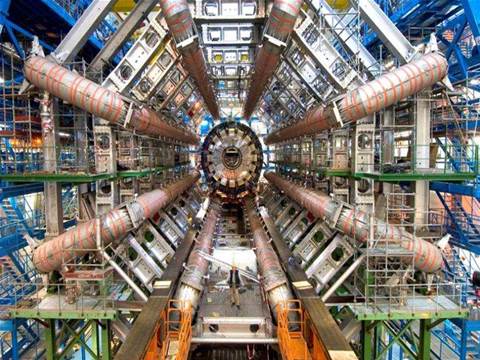As the Large Hadron Collider (LHC) powers up, scientists at CERN have announced that the twin energy beams at the heart of the device have broken new records.
The beams are now powered at 1.18 trillion electric volts (TeV), well past the previous record of under one TeV, which was held by the US Fermi National Accelerator Laboratory.
“I was here 20 years ago when we switched on CERN’s last major particle accelerator, LEP,” said Research and Technology director Steve Myers.
“I thought that was a great machine to operate, but this is something else. What took us days or weeks with LEP, we’re doing in hours with the LHC. So far, it all augurs well for a great research programme.”
This however is just the start. The CERN team plan to add more power, bringing the streams to 3.5 TeV per beam in the first quarter of next year and then let them collide in an attempt to discover more about the essential building blocks of life.
“We are still coming to terms with just how smoothly the LHC commissioning is going,” said CERN director General Rolf Heuer.
“It is fantastic. However, we are continuing to take it step by step, and there is still a lot to do before we start physics in 2010. I’m keeping my champagne on ice until then.”
Hadron Collider powers up to new energy record
By
Iain Thomson
on Dec 1, 2009 4:01PM

Got a news tip for our journalists? Share it with us anonymously here.
Partner Content

Tech Data: Driving partner success in a digital-first economy

Shure Microsoft Certified Audio for Teams Rooms
_(11).jpg&h=142&w=230&c=1&s=1)
The Compliance Dilemma for Technology Partners: Risk, Revenue, and Reputation

Tech Buying Budgets for SMBs on the Rise

Channel faces AI-fuelled risk as partners lag on data resilience, Dicker Data summit told




.jpg&w=100&c=1&s=0)
_(8).jpg&w=100&c=1&s=0)







.jpg&q=95&h=298&w=480&c=1&s=1)





